Need a Survey? There’s a USV for That
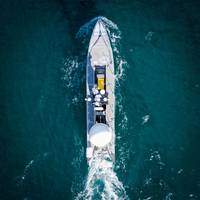
While the adoption of unmanned/uncrewed surfaces vessels (USVs) was initially in defence, use of these low footprint systems has spread into other sectors, not least survey, and now the race is on for greater capability, endurance and autonomy. Elaine Maslin reports.After starting small, in inland waterways, use of USVs for survey operations has moved into coastal and now offshore waters. Given the extensive amount of seabed and rapid growth in offshore wind, there’s plenty of work out there for them to do.With the travel restrictions posed by Covid and increasing awareness of climate change…
Port Security: Autonomous ANTX
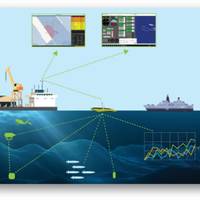
Geophysical seismic surveys and port security may appear to have little in-common. However, it turns out that managing complex marine seismic operations, where 10km-long seismic streamers have to be deployed harmoniously alongside other offshore marine assets, isn’t that dissimilar to managing – and protecting – port facilities.It's an area that ION Geophysical, more known for seismic data acquisition technology, has recently been proving its expertise in, using its Marlin system for marine operations management.
Understanding Marine Autonomy: Today’s Market and Future Concerns
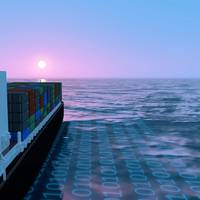
Press coverage of early commercial marine autonomy projects is remarkably broad given the small number of marine industry professionals engaged in bringing these projects to market. The much larger assembly of industry stakeholders are left wondering what marine autonomy means for them. Regulatory, cost, and technical challenges stand in the way of fielding today’s autonomy technologies for most existing fleets and vessel missions. Autonomy is coming whether you’re prepared or not.
For the Royal Australian Navy, Technological Leap Starts Small
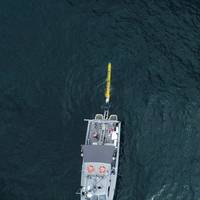
Driven by the need to organically protect maritime Task Groups from the threat of sea mines, the Royal Australian Navy is introducing a deployable Mine Counter-Measures (MCM) capability under the first phase of Project SEA 1778.The Royal Australian Navy’s (RAN) SEA 1778 deployable Mine Counter-Measures (MCM) capability is both a small step forward in the spiral development process and a “technological leap” into autonomy.”The RAN is looking to replace its four legacy Huon-class minehunter coastal ships (MHCs) with a new deployable MCM capability.
SBG Systems' INS Chosen for Shom Fleet
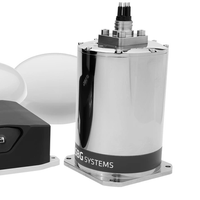
Shom, the French national hydrographic and oceanographic office selected SBG Systems’ inertial navigation sytems to renew their whole fleet of INS. They chose Navsight Apogee INS for their speedboats and survey vessels for both shallow and deep-water real-time bathymetric surveys and Qinertia PPK software for post-processing tasks.Shom has 3 major objectives: national hydrography and cartography, defense support in hydro-oceanographic fields, and support in maritime geospatial products and services for public policies on the sea and the coast.
Subsea Robotics for Renewables
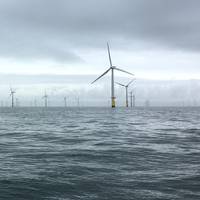
As the global fleet of offshore renewables fleet increases, ways to reduce the cost and increase the efficiency and safety of operations and maintenance work, using robotics and autonomous systems, will also grow. Elaine Maslin reports.Robotics and autonomous systems are moving into many areas of modern day life. It’s becoming harder to avoid them, from our phones to automotive systems and now offshore energy renewable projects.Both are seen as tools to do otherwise dull, dirty or dangerous work…
Learn to Weld with a Virtual Personal Trainer
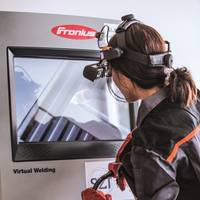
The Fohnsdorf Training Center is located in Styria, Austria. To train welders, it uses a virtual welding system – the Virtual Welding simulator from Fronius, the Austrian technology leader. The simulator employs a virtual trainer to provide 1:1 training for the center’s students, an approach that has a positive impact on training quality.A young student carefully guides the welding torch. The weaving motions she makes as she welds the single-V butt weld in front of her appear very composed, an impression that is confirmed by the consistently positive feedback from her trainer.
Tech Talk: GHS Adds 'Seakeeping'
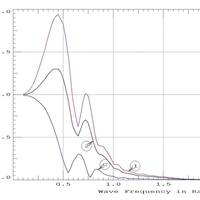
General HydroStatics is no longer just about hydrostatics, and will soon offer capabilities in the world of hydrodynamics with the introduction of a long awaited addition to the GHS product family: an optional seakeeping module. Adding a seakeeping module means run files may now include seakeeping capabilities by adding a couple new commands and existing geometry files (.GF) can be used for the seakeeping analysis with little or no modification. Integration with GHS also reduces required user input, getting answers faster while increasing user control.
DNV GL Boosts Investment in 3D Printing

The new center, which is supported by the Singapore Economic Development Board (EDB), will focus on developing competence including qualification, certification and training for additive manufacturing (AM), also known as 3D printing. While AM is raising more and more interest in various industries, as the benefits of speed and cost against traditional product manufacturing become apparent, the adoption level in the O&M sector is still low due to challenges in qualification and certification.
DNV GL: First Class Guideline for Additive Manufacturing
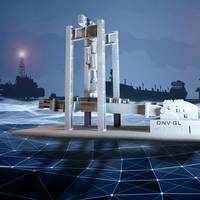
DNV GL has published the first classification guideline for the use of additive manufacturing (AM) in the maritime and oil amid gas industries. The guideline is designed to help manufacturers and sub-suppliers of materials, parts and components, service suppliers and end users adopting AM technologies, by ensuring that the parts or components created by an AM process and the materials from which they are created have the same level of quality assurance as traditionally manufactured products.
Finite Element Strength Analysis for ATB Load Box
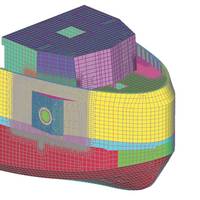
The loading and response dynamics of an Articulated Tug & Barge (ATB) load box are complex. They typically require advanced finite element analysis methods and procedures to design an efficient support structure to ensure a durable design and to facilitate meeting Class strength requirements. To study the dynamic response of the loads imparted on the tug from the barge, a finite element analysis (FEA) is carried out. Loading conditions that include the static sea pressure, gravity loads, and reaction forces from the ATB Coupler are incorporated into the FEA analysis.
Kongsberg Releases GeoSwath Plus Survey Software
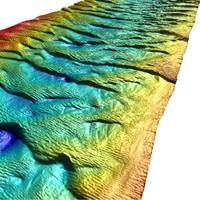
Released to selected trial customers earlier this year, the next generation software for Kongsberg Maritime’s GeoSwath Plus shallow water multibeam echo sounder has already been put through its paces on the river Douro in Northern Portugal by one of the country’s survey companies, Lagoa do Ruivo Survey (LRS). The new GS4 all-in-one survey package is a completely reworked version of the GS+ software, providing higher performance and a contemporary look and feel. The software is now available to all GeoSwath Plus users.
The Art of Propeller Making
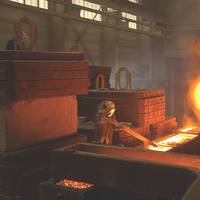
The world’s biggest propellers have their cradle in the North of Germany. MMG – Mecklenburger Metallguss GmbH – has manufactured for more than 65 years propellers for ships, including the biggest and fastest, in the State of Mecklenburg-Vorpommern. With the manufacture of propellers up to 130 tons, its manufacturing process requires a delicate hand and lots of patience. Despite the fact that commercial shipbuilding has shifted to the Far East, the melting-furnaces in Waren an der Müritz, headquarters of MMG, have not switched off.
Divers Monitor HMS A7 Using Underwater Thickness Gauge
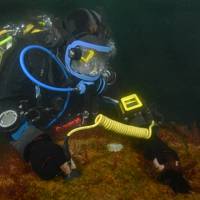
A team of divers from the A7 Project have measured the metal thickness of the sunken HMS A7 submarine using a Cygnus DIVE underwater ultrasonic thickness gauge, allowing them to determine the current condition of the submarine and to monitor its deterioration over time. The A7 Project is part of The SHIPS Project (Shipwrecks and History in Plymouth Sound), which is being run by a local group of divers and shipwreck enthusiasts. The project aims to record the long maritime history…
Unique System & HYPACK's Hydrographic Course in UAE
A division of the Unique Maritime Group (UMG) which is one of the world’s leading integrated turnkey subsea and offshore solution providers, Unique System FZE in conjunction with HYPACK Inc. has successfully conducted HYPACK’s hydrographic & offshore survey training course at its training centre in Hamriyah Free Zone, Sharjah, UAE. As a precursor to this hugely popular course, a string of training topics, both technical and operational remarkably influencing the current market trends in the survey industry were also discussed as a part of the training schedule. The training courses were held from the 16th to the 27th of November 2014. HYPACK is one of the most widely used hydrographic surveying packages in the world, with more than 4,000 users.
Furuno Makes Clean Sweep of NMEA Awards
Over the past 43 years, Furuno has received the honor of being the most recognized company in the marine electronics field by the National Marine Electronics Association (NMEA). This year, Furuno won four more NMEA awards at the prestigious 2014 NMEA Convention in Sanibel, FL, bringing Furuno’s NMEA Award all-time total to an amazing 212 wins. For the ninth consecutive year, Furuno received the highly coveted Manufacturer of the Year - Support award. Furuno continues to be the sole recipient of this award, since its introduction on the ballot in 2005. “Bringing fresh, new products to the market is certainly an important part of business,” stated Jim Atteridge, President of Furuno USA, “but offering excellent customer service is the cornerstone of Furuno’s success.
RINA Tackles Ocean Noise Pollution
International classification society RINA has acted to tackle noise pollution of the seas by developing a voluntary notation which will apply to vessels for which efforts have been made to mitigate underwater noise. Paolo Moretti, Head of the Marine Business Line, RINA Services, said, “Noise is the new pollution. The international community has raised concern that the underwater noise generated by commercial shipping may have negative consequences on marine life, especially marine mammals. IMO has recently published MEPC Circ. 833 “Guidelines For The Reduction Of Underwater Noise From Commercial Shipping To Address Adverse Impacts On Marine Life” which sets out advice on design and operational solutions that may be adopted to reduce underwater radiated noise.
Hydrodynamic Software Suites
To support designers and engineers in evaluating design concepts more efficiently, MARIN has developed the hydrodynamic suites QSHIP and QPROP. Hydrodynamic considerations have a great impact on the operational performance of a ship during its lifetime. For this reason, it is important to integrate hydrodynamic analyses as early as possible into the ship design phase. Improving powering, seakeeping and maneuvering performance may have a major impact on design aspects such as the capabilities and General Arrangement plan. Improving hydrodynamic performance at more advanced stages of the design is hardly possible. This led MARIN to develop the hydrodynamic suites QSHIP and QPROP.
Bureau Veritas Speeds CSR-H Implementation
International classification society Bureau Veritas has completed a series of consequence assessments with all the major shipyards in Korea, China and Japan to help them speed the implementation of the IACS Harmonized Common Structural Rules. The assessments of current yard designs were made using BV’s fully adapted suites of user-friendly software for structural analysis, MARS2000 and VeriSTAR Hull. Christophe Chauviere, head of the development department for Bureau Veritas’ Marine and Offshore division, said, “Because BV played a leading role in the harmonization of the IACS Common Structural Rules we were able to rapidly update our software for the new standards. MARS2000 is BV’s tool for 2D prescriptive requirements assessment.
FARO Debuts New X Series Laser Scanner

FARO Technologies, Inc., a 3D measurement, imaging and realization technology company, announced the release of the new FARO Laser Scanner Focus3D X 130. According to the manufacturer, the Focus3D X 130, the newest member of Focus3D X Series range of laser scanners, delivers tremendous power, compact design and the flexibility to perform laser scanning in both indoor and outdoor environments. With a scanning range of 130 meters, this laser scanner is suited for mid-range scanning applications such as architecture…
ARGUS & Sailing the NOAA's 'Magenta Line'
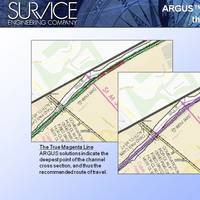
SURVICE Engineering respectfully suggests that the magenta line is a prime example of “other” valuable uses for ARGUS data in its current form, beyond reconnaissance and its future potential use for nautical charting. ARGUS is a patented (U.S. Patent 8,417,451), autonomous, crowd source bathymetry (CSB) system that provides automated acquisition and processing of CSB data. Originally demonstrated as part of a NOAA research grant, the system consists of a compact, automated…
Royal New Zealand Navy Upgrades Software
SeeByte, the global leader in creating smart software for unmanned maritime systems, is pleased to announce that the Royal New Zealand Navy has chosen to purchase three upgraded seats of SeeTrack Military. The Royal New Zealand Navy, one of SeeByte’s longest-standing customers, first purchased three seats of SeeTrack Military in 2006. The software is now used globally by 16 of the world’s navies. Ron Tyson of New Zealand Offshore Technology (NZOT), who managed the acquisition, commented “It is great news that the Royal New Zealand Navy will have the most up-to-date version of SeeTrack. WOCSS James Harper, Commanding Officer of the Mine Counter Measures Team said: "SeeTrack Military is well known as the MCM software tool of choice.
Kongsberg EM 2040 Multibeam Goes Compact
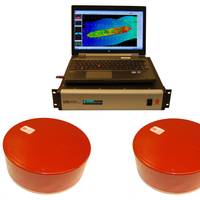
Kongsberg Maritime will introduce the new EM 2040 Compact, a sophisticated multibeam echo sounder for high resolution mapping and inspection applications, during Ocean Business 2013. Based on the EM 2040 multibeam, the EM 2040C is a development in acoustic technology that makes detailed surveys of shallow water possible using small boats and launches. Kongsberg Maritime will also offer another variant, the EM2040CX for use on AUVs, ROVs and other vessels of opportunity. Available in single or dual head configurations…







